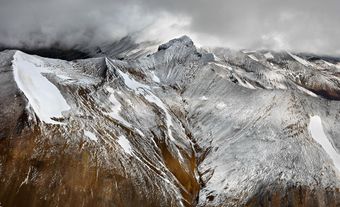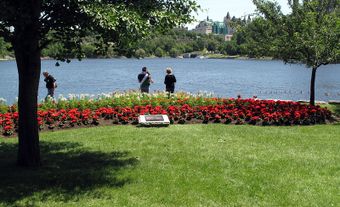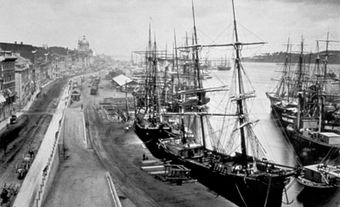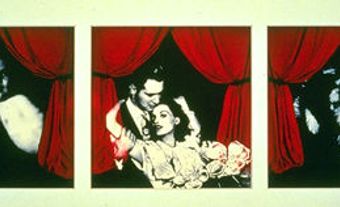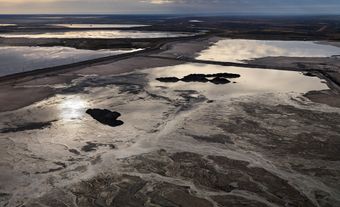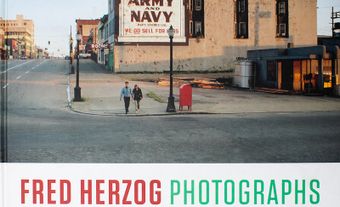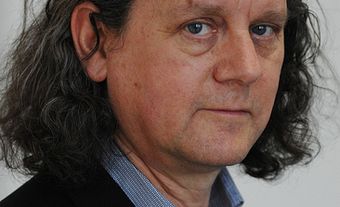Yousuf Karsh, CC, RCA, photographer (born 23 December 1908 in Mardin, Armenian Turkey; died 13 July 2002 in Boston, Massachusetts). Armenian Canadian Yousuf Karsh was arguably Canada’s best-known and most acclaimed photographer. Known professionally as “Karsh of Ottawa,” he was widely regarded as one of the greatest portrait photographers of the 20th century. Well-known Karsh portraits include those of Sir Winston Churchill, Ernest Hemingway, Charles de Gaulle, Albert Einstein, Sir Robert Borden, John F. Kennedy, Martin Luther King and Marshall McLuhan. Karsh’s works are held in the collections of the National Gallery of Canada, the Museum of Modern Art in New York, the National Museum of Modern Art in Tokyo and the National Portrait Gallery in London, among many others. Karsh’s younger brother, Malak Karsh, was also an acclaimed photographer.
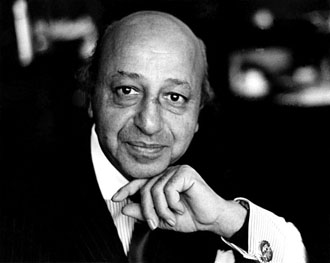
Early Life
Yousuf Karsh was born to Armenian parents in Mardin (now part of Turkey) in the Ottoman Empire. His Catholic father, Amsih Karsh, was an illiterate merchant, while his mother, Bahia Nakash, was Protestant. Karsh grew up during the Armenian genocide and had family members who were murdered. He later wrote that “My recollections of those days comprise a strange mixture of blood and beauty, of persecution and peace.”
After escaping with his family to a refugee camp in Aleppo, Syria, in 1922, Karsh arrived in Halifax as an Armenian refugee on 31 December 1924. He lived and studied with his maternal uncle George Nakash (or Nakashian), a portrait photographer in Sherbrooke, Quebec, who gave Karsh a Kodak Brownie box camera. Karsh then apprenticed in Boston with well-known celebrity portrait photographer John H. Garo from 1928 to 1931. The strategic contrast of light and dark that marked Karsh's imagery is rooted in his work with Garo.

Career Highlights
In 1932, Yousuf Karsh moved to Ottawa, where he opened a portrait studio with the intent of photographing what he called “people of consequence.” His stated goal, expressed in his 1962 autobiography, In Search of Greatness: Reflections of Yousuf Karsh, was to distill “the essence of the extraordinary person.” Prime Minister Mackenzie King recognized Karsh’s talent and arranged for him to photograph visiting dignitaries. Karsh’s portraits of Governor General Lord Bessborough and his wife, taken in the early 1930s, were widely published.
Karsh's photographic portraits have come to represent the public images of major international figures of politics, science and culture in the 20th century. The portraits have been displayed in public galleries and circulated widely in magazines. Well-known Karsh portraits include those of Georgia O'Keeffe, W. Somerset Maugham, Martha Graham, Ernest Hemingway, Charles de Gaulle, Peter Lorre, Albert Einstein, Sir Robert Borden, Audrey Hepburn, Elizabeth Taylor, Pablo Picasso, Walt Disney, George Bernard Shaw, Dwight D. Eisenhower, Nikita Khrushchev, Yuri Gagarin, Fidel Castro, John F. Kennedy, Martin Luther King and Marshall McLuhan.
Karsh also published numerous books as portfolios of his portrait photographs in the belief that a collective display gives the images a visual momentum that a single portrait alone cannot attain. The first of these was Faces of Destiny (1946). In each collection, the portraits are accompanied by texts written by Karsh based upon his encounter with the subject.
Though he specialized in portrait photography, Karsh also received commissions from the Ford Motor Company to photograph assembly-line workers in Windsor, Ontario, and from Bishop Fulton J. Sheen of the Roman Catholic Archdiocese of New York to photograph landscapes of Rome and the Holy Land. A photo taken by Karsh of the rock band Rush was used on the back of their 1984 album, Grace Under Pressure.
In 1972, Karsh moved his studio to the Château Laurier hotel, near Parliament Hill. He closed his Ottawa studio in June 1992 at the age of 83. Later that year he published Karsh: American Legends, 73 portraits of famous American men and women in their homes. Leonard Bernstein, Bill and Hillary Clinton, and Norman Schwarzkopf are among those photographed. The book was complemented by a touring exhibition organized by the International Center of Photography in New York.
In 1997, Karsh moved to Boston. As a parting gift, he left a small collection of classic portraits to the Château Laurier, where his former studio is now known as the Karsh Suite. The 2,000-square-foot suite — where he and his wife lived for 18 years — showcases nine of Karsh’s original portraits.

“Roaring Lion” Portrait of Sir Winston Churchill
Yousuf Karsh's 1941 portrait of Sir Winston Churchill is widely regarded as one of the most significant portraits of the 20th century, and the definitive depiction of Churchill’s character. Karsh established his international reputation with this image, which he snapped in the House of Commons immediately after plucking a cigar from Churchill’s mouth, thereby eliciting his signature scowl. The image — nicknamed the “roaring lion” — appeared on the cover of LIFE magazine in May 1945 and, later, on the British five-pound note. The Economist called the picture the “most reproduced portrait in the history of photography.”
A copy of the photograph signed by Karsh had been on public display at the Château Laurier since the late 1990s. In August 2022, a maintenance worker at the hotel noticed that the picture’s frame didn’t seem right. Further inspection revealed the photograph to be a fake, complete with a forgery of Karsh’s signature. The theft was determined to have taken place about eight months earlier, sometime between Christmas Day 2021 and 6 January 2022, when Ottawa was under a COVID-19 lockdown and the hotel was closed.
Dubbed “Canada’s art heist of the century,” the theft made international headlines. A global search was launched by Ottawa police in conjunction with other organizations, most notably the London Metropolitan Police in the UK. On 11 September 2024, Ottawa police announced that the photograph had been found in Italy. A buyer in Genoa had bought the picture from Sotheby's auction house in London; neither party was aware the photograph had been stolen. A 43-year-old Ontario man was arrested in connection with the theft. Italian authorities arranged to return the portrait to Canada, where it would once again hang on display at the Château Laurier.
Characteristic Style
Yousuf Karsh was known for his use of dramatic lighting, which he credited to his apprenticeship with John H. Garo (whom Karsh called his greatest influence), as well as to his work with the Ottawa Little Theatre, where his wife was an actor. One of Karsh’s signature techniques was to light a subject’s hands and face separately.
Collections
In 1987, the National Archives of Canada acquired the complete collection of negatives, prints and transparencies produced and retained by Karsh between 1933 and 1987. Karsh also donated nearly 100 photographs to the National Gallery of Canada, which in 1960 had given him his first solo exhibition in a public gallery. In 1989, to mark the 150th anniversary of photography, these two institutions jointly produced a retrospective exhibition of Karsh's career in portrait photography.
Other institutions to hold Karsh’s works include the Metropolitan Museum of Art and the Museum of Modern Art in New York, the National Museum of Modern Art in Tokyo, the National Portrait Gallery in London, the Muscarelle Museum of Art in Virginia and the Art Institute of Chicago.
Personal Life and Family
Yousuf Karsh was married to French-born actor Solange Gauthier, a star of the Ottawa Little Theatre, from 1939 until her death from cancer in 1961. In August 1962, Karsh married Estrellita Maria Nachbar, a medical writer 21 years younger than him. They had no children together and were married until Karsh’s death from complications following surgery on 13 July 2002 at age 93. He died in Boston and was interred at Notre-Dame Cemetery in Ottawa.
Karsh’s younger brother, Malak Karsh, was one of Canada’s most acclaimed and prolific landscape photographers. (To avoid confusion, he was commonly known as Malak, while Yousuf was known professionally as Karsh.) Malak also founded the Canadian Tulip Festival in Ottawa in 1953. In 2003, the City of Ottawa established the annual Karsh Award. It is named in honour of Malak and Yousuf Karsh “for their immense contribution to our city's rich cultural heritage.” The prize is presented to a mid-career or established Ottawa artist working in the photographic arts.
Legacy
Yousuf Karsh earned a reputation as one of the greatest portrait photographers of the 20th century. The Economist described him as “perhaps the greatest portrait photographer in the monumental manner.” The Metropolitan Museum of Art called him “one of the greatest portrait photographers of the twentieth century [who] achieved a distinct style in his theatrical lighting.” The journalist George Perry once wrote in London’s Sunday Times that “When the famous start thinking of immortality, they call for Karsh of Ottawa.” By the time Karsh retired in 1992, more than 20 of his photographs had graced the cover of LIFE magazine.
On 9 June 2017, a bronze bust of Karsh by Armenian Canadian sculptor Megerditch Tarakdjian was unveiled in front of the Château Laurier. The bust was a gift from Armenia to mark both the 25th anniversary of diplomatic relations between Armenia and Canada and the 150th anniversary of Confederation.
Honours and Awards
- Golden Plate Award, American Academy of Achievement (1961)
- Canada Council Medal, Canada Council for the Arts (1965)
- Officer, Order of Canada (1967)
- Medal of Service of the Order of Canada and the Centennial Medal (1968)
- Master of Photographic Arts, Professional Photographers of Canada (1970)
- Medal of the Royal Canadian Academy of Arts, Royal Canadian Academy of Arts (1975)
- Member, Royal Canadian Academy of the Arts (1975)
- President’s Cabinet Award, University of Detroit (1979)
- Achievement and Life Award, Encyclopædia Britannica(1980)
- Silver Shingle, Boston University School of Law (1983)
- Gold Medal for Furthering Canadian-American Understanding, Americas Society (1989)
- Creative Edge Award, New York University and TIME Inc. (1989)
- Master of Photography Award, International Center of Photography (1990)
- Companion, Order of Canada (1990)
- Gold Medal of Merit, National Society of Arts and Letters(1991)
- Jerusalem Prize for Arts and Letters, Bezalel Academy (1997)
- Inductee, International Photography Hall of Fame and Museum (2003)
- Honorary Fellow, Royal Photographic Society of Great Britain
Honorary Degrees
- Doctor of Laws, Carleton University (1960)
- Doctor of Laws, Queen's University (1960)
- Doctor of Humane Letters, Dartmouth College, New Hampshire (1961)
- Doctor of Humane Letters, Ohio University (1965)
- Doctor of Laws, Mount Allison University (1968)
- Doctor of Civil Law, Bishop's University (1969)
- Doctor of Humane Letters, Emerson College (1969)
- Bachelor of Professional Arts, Brooks Institute of Photography (1973)
- Doctor of Fine Arts, University of Massachusetts at Amherst (1979)
- Doctor of Fine Arts, University of Hartford (1980)
- Doctor of Fine Arts, Tufts University (1981)
- Doctor of Fine Arts, Syracuse University (1986)
- Doctor of Humane Letters, Yeshiva University (1989)
- Doctor of Humane Letters, Ohio State University (1996)

 Share on Facebook
Share on Facebook Share on X
Share on X Share by Email
Share by Email Share on Google Classroom
Share on Google Classroom
